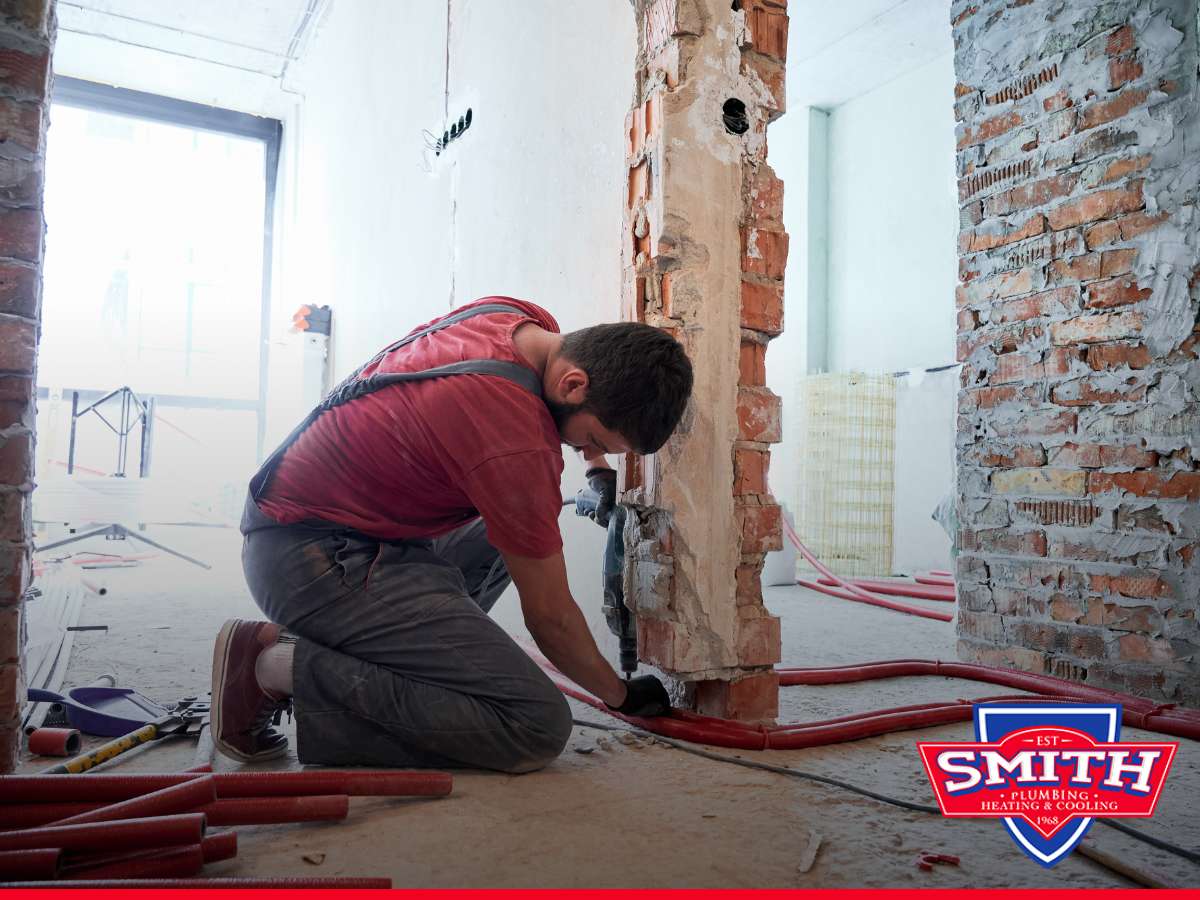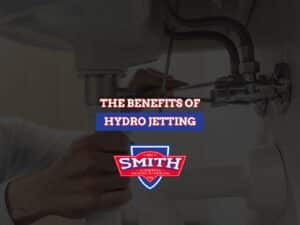How To Address Plumbing Issues In Aging Infrastructure
Older homes offer unique charm with classic details, sturdy materials, and a timeless appeal. But behind that character, it’s common to find aging infrastructure that needs attention. Plumbing systems, in particular, often show signs of wear after decades of use, making them one of the most frequent sources of problems in older properties.
If you own or plan to buy an older home, it’s essential to know common plumbing issues and how to fix them before they worsen. Discover the most frequent repairs and what to watch for here!

1. Failing Sewer Lines
Aging sewer lines are a major concern in older homes, especially if the plumbing hasn’t been updated. Materials like clay or cast iron can deteriorate over time, leading to cracks, collapses, or damage from invasive tree roots.
Modern appliances increase water flow, adding stress to these outdated systems and raising the risk of failure. Signs to watch for include multiple drains backing up, sewer-like odors inside, unexplained puddles in the yard, or gurgling sounds from toilets and sinks.
Ignoring these issues can lead to serious problems involving raw sewage. Luckily, trenchless repair methods can fix or replace damaged lines with minimal yard disruption.
If you notice any of these signs, it’s best to contact a trusted provider of plumbing services to assess your system and recommend the appropriate solution.
2. Poorly Executed Repairs From Previous Owners
Older homes often come with a long trail of DIY repairs—quick fixes made without permits or professional expertise. While some of these might have worked in the short term, they often lead to more complex issues later on. For instance, common problems that result from past patchwork solutions include:
- Loose or unsupported pipes that rattle and leak.
- Inverted P-traps that allow sewer gases to enter the home.
- Incorrect slope in shower pans or drains.
- Unsafe water heater setups with missing expansion tanks or pressure relief valves.
If your fixtures don’t seem to drain properly, or if the water pressure fluctuates, it might be due to past mistakes. An experienced plumber can audit your system, identify safety concerns, and bring everything back up to code.
3. Corroded Or Outdated Pipes
One of the biggest concerns in homes built before the 1990s is the use of outdated piping materials. Over time, materials like galvanized steel, lead, or polybutylene degrade and pose serious risks to your water quality and plumbing system.
- Galvanized steel pipes, once popular in mid-century homes, tend to corrode from the inside out. This leads to rust-colored water, low pressure, and eventually pipe failure.
- Lead pipes, common in homes built before 1978, can leach toxic metal into the water supply. Lead poisoning is especially dangerous because its effects are irreversible.
- Polybutylene pipes, used in homes from the 1980s through the early 1990s, react with oxidants in municipal water, becoming brittle and prone to cracking.
If you’re experiencing discolored water, unexplained water damage, or reduced flow, it may be time to consider pipe replacement. A trusted plumbing company can run tests and inspections to determine what kind of piping you have and whether a full repipe is necessary.
4. Inefficient Fixtures & Faucets
That vintage faucet in your clawfoot tub might add character to the space, but if it drips nonstop or struggles to maintain steady water flow, there’s likely more going on than just surface wear. Over time, mineral buildup, corrosion, and worn components can lead to leaks and reduced water pressure. Some signs it’s time for an upgrade are:
- Hard-to-turn knobs.
- Inconsistent water temperature.
- Musty smells near fixtures.
These small annoyances can become expensive water bills or cause structural damage over time. Upgrading to modern fixtures not only improves efficiency but can help preserve your home's value and comfort.
5. Water Heater Woes
In many older homes, water heaters have been in use for 15 to 20 years or more. While they may still work, age and wear often reduce their efficiency. Sediment buildup at the tank’s bottom can lower capacity, increase energy use, and cause noises or uneven heating.
If your water heats slowly, you hear popping sounds, notice rust-colored water from hot taps, or see leaks near the unit’s base, these are signs your heater needs attention.
A professional plumber can inspect your system and suggest a flush, repairs, or replacement. For those looking to upgrade, energy-efficient tankless models provide a modern option with many benefits.
6. Pipe Bellies & Settling Damage
As homes settle over the years, horizontal pipes buried beneath the house can develop what’s known as a “pipe belly”—a low point where water and waste collect instead of flowing smoothly. These sags become a hotspot for clogs, leaks, and even root intrusion from nearby trees. For example, common signs of a pipe belly include:
- Frequent clogging in drains.
- Gurgling noises from toilets or sinks.
- Foul odors coming from plumbing fixtures.
- Unusual patches of lush grass in your yard.
These problems shouldn’t be ignored. If left untreated, a pipe belly can rupture and cause serious water damage. Plumbing contractors often use camera inspections to locate and assess the issue, then replace the damaged pipe and restore the proper slope.
7. Leaks That Fly Under the Radar
While some leaks make themselves known with puddles or water stains, others are far sneakier. Undetected leaks behind walls or under floors can lead to mold growth, structural damage, and even foundation issues. Look out for:
- Musty odors.
- Cracks in drywall or flooring.
- Unusually high water bills.
- Low water pressure in specific fixtures.
Leak detection often requires specialized equipment that only professionals have. A qualified team of plumbers can conduct a full inspection and use tools like acoustic sensors or thermal imaging to find and fix hidden leaks quickly.
Why Routine Plumbing Inspections Matter
Many plumbing issues in older homes develop gradually over time, making regular maintenance essential to keep your system running smoothly. Scheduling an annual inspection allows professionals to detect problems early, before they escalate into costly emergencies.
During a typical inspection, plumbers evaluate water pressure and flow, check for leaks and corrosion, examine the water heater and supply lines, assess drains and vent stacks, and ensure everything complies with current building codes.
If you’ve recently moved into an older home or have lived in one for years, having a licensed plumber experienced with historic properties perform a thorough inspection is a wise investment in your home’s longevity and safety.
Questions To Ask The Plumber Before Starting Repairs
Before hiring a professional to inspect or work on the plumbing in your older home, it’s wise to ask a few key questions. These will help you feel confident in your decision and avoid surprise costs or delays:
- Are you licensed and insured?
- Do you have experience working with older plumbing systems?
- Will you perform a full inspection before starting any plumbing repairs?
- What’s included in your estimate—and are there potential extra costs?
- Do you offer any warranty on parts or labor?
- How long will the job take, and will I need to vacate any part of the home?
- Can you provide references or photos of similar past work?
Getting clear answers upfront ensures transparency and sets realistic expectations for your project!
Get The Right Help Before Small Issues Become Big Problems
Living in an older home brings charm but also responsibilities. Plumbing systems from decades ago weren’t made for today’s demands, and many materials are now outdated or unsafe.
Knowing the common issues and when to call a pro helps protect your investment and keep your home worry-free. As Arizona's top-rated plumbing company, we recommend that if you suspect problems, don’t wait. Contact us today!


